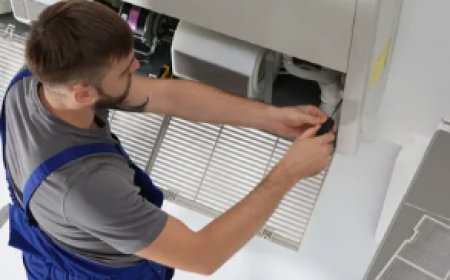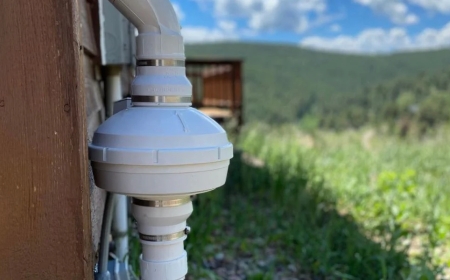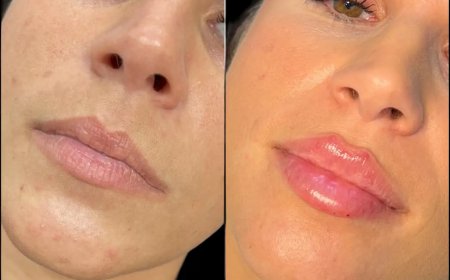NURS FPX 4015: Advancing Nursing Practice Through Holistic Patient Care and Education
NURS FPX 4015: Advancing Nursing Practice Through Holistic Patient Care and Education
As healthcare evolves to become more holistic, inclusive, and evidence-driven, nurses must be equipped with the tools to address a broad range of patient needs across populations. Capella UniversitysNURS FPX 4015: Leading in Intradisciplinary Practice for Patient Safetyprovides nursing students with essential experience in leadership, education, and patient-centered care. It focuses on real-world application through simulations, teaching strategies, and collaborative practice models that improve safety and quality outcomes.
Structured into four progressive assessments, this course bridges theory and practice by guiding students through volunteer engagement, patient assessments, concept mapping, and teaching special populations. Each assignment sharpens both clinical reasoning and educational communicationtwo vital elements of advanced nursing practice.
Assessment 1: Volunteer Experience and Patient Interview
The course begins with an immersive introduction inNURS FPX 4015 Assessment 1: Volunteer Patient. This assessment challenges students to engage with a volunteer patient and conduct a full health assessment to identify care priorities and safety concerns.
Key aspects of the assessment include:
-
Gathering comprehensive health data from a volunteer subject
-
Identifying social determinants and patient-reported concerns
-
Evaluating risk factors related to safety, environment, and lifestyle
-
Practicing active listening and therapeutic communication
This initial assignment introduces students to the clinical and interpersonal dynamics of real patient interaction, emphasizing the value of empathy and cultural competence.
Assessment 2: Building on Clinical Judgment and Safety
InNURS FPX 4015 Assessment 2, students take their observations further by identifying safety risks, prioritizing interventions, and considering the role of the nurse in risk mitigation. This assignment expands the scope of the initial patient interaction by applying nursing judgment to design a safer, more supportive care environment.
Students are expected to:
-
Analyze potential hazards related to the volunteers home or social environment
-
Develop an evidence-based action plan to address safety gaps
-
Reflect on how intradisciplinary practice supports patient safety
-
Examine ethical, cultural, or legal implications of their plan
This phase reinforces the nurses role as an advocate for proactive, preventative carea skillset increasingly emphasized in contemporary practice.
Assessment 3: Concept Mapping and the 3 Ps
The third component,NURS FPX 4015 Assessment 3: Concept Map The 3 Ps, introduces the powerful technique of concept mapping to organize clinical thinking. In this task, students visualize the3 Ps: Pathophysiology, Pharmacology, and Physical assessmentas they relate to the volunteer patients needs.
Highlights of this assessment include:
-
Synthesizing clinical data into a visual representation of care
-
Demonstrating the interrelationships between conditions, medications, and symptoms
-
Identifying gaps in treatment or monitoring
-
Reinforcing diagnostic reasoning and pharmacological understanding
Concept maps help nurses connect the dots between clinical presentations and intervention strategies. This assignment also fosters critical thinking, encouraging learners to identify the why behind their nursing actions.
Assessment 4: Caring for Special Populations Teaching Presentation
The course culminates inNURS FPX 4015 Assessment 4: Caring for Special Populations Teaching Presentation. This final project tasks students with creating and delivering an educational presentation targeted at a specific vulnerable population, such as older adults, children, individuals with disabilities, or underserved communities.
The presentation must include:
-
Tailored health education based on the populations unique risks
-
Evidence-based strategies for health promotion and disease prevention
-
Consideration of health literacy and cultural relevance
-
Clear communication techniques using teaching tools or visuals
This assessment strengthens the students role as an educatoran increasingly vital function in nursing. Whether teaching patients, caregivers, or community groups, effective communication is key to promoting better outcomes.
Why NURS FPX 4015 Matters in Todays Healthcare Landscape
NURS FPX 4015is more than just a sequence of assessmentsit is a pathway to becoming a well-rounded, patient-centered, and safety-driven nursing professional. The course cultivates a wide range of competencies, including:
-
Clinical judgment and prioritization
-
Ethical and cultural awareness
-
Risk assessment and patient safety planning
-
Health education and communication
-
Visual and conceptual planning through mapping techniques
These skills are essential in acute care, home health, long-term care, and public health settings alike. The course also reinforces the need forintradisciplinary collaboration, where nurses work across teams to achieve unified goals.
Academic Support for NURS FPX 4015 Assessments
Given the detailed and reflective nature of these assessments, many Capella students seek academic guidance from trusted services likeWritink. These platforms provide expert support with:
-
Drafting health assessment reports and interview summaries
-
Developing concept maps based on clinical reasoning
-
Designing culturally sensitive teaching presentations
-
APA formatting and scholarly source integration
Such academic support not only boosts grades but also builds student confidence and prepares them for real-world documentation and communication demands.
Final Thoughts
Capella UniversitysNURS FPX 4015: Leading in Intradisciplinary Practice for Patient Safetyequips nursing students with hands-on, adaptable, and practical skills for todays dynamic healthcare environments. From engaging with real patients to designing evidence-based teaching materials, the course helps future nurses become thoughtful practitioners and effective leaders.



































